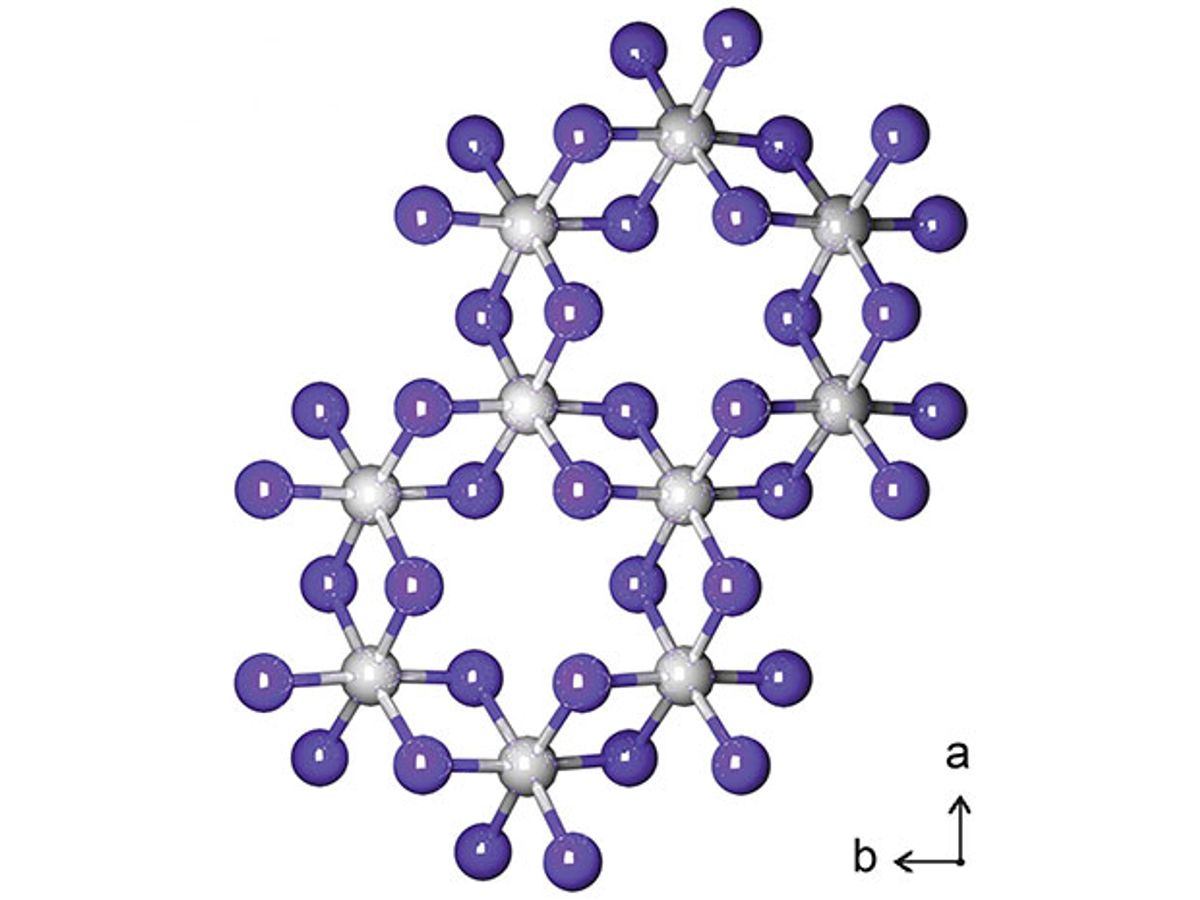Scientists from the University of Washington and MIT have demonstrated that a monolayer of a two-dimensional material can exhibit an intrinsic magnetism.
This might seem like the latest in a series of seemingly similar announcements on 2D-material magnetism.However, this latest work differs from the others we’ve covered in that it demonstrates ferrimagnetism in a single layer of a 2D material without the use of an accompanying substrate to provide the magnetism.
Back in April, we reported on research out of Lawrence Berkeley National Laboratory that demonstrated that layerd crystals of a 2D material held together by van der Waal forces can exhibit intrinsic ferromagnetism. But that effort was not able to measure ferromagnetism in a single monolayer.
Then in June, we reported on how researchers from the Paul Scherrer Institute and at the University of Basel had fabricated the first 2D ferrimagnetic material that consists of only two layers of material—a monolayer of a 2D material with a substrate of gold laid underneath it.
“The magnetic properties of conventional monolayer magnets hinge on the substrate,” explained Xiaodong Xu, a University of Washington professor of physics and co-author of the new research described in the journal Nature, in an e-mail interview with IEEE Spectrum. “The monolayer ferromagnet demonstrated by us is a truly isolated 2D crystal, with robust ferromagnetism.”
This demonstration of ferrimagnetism in a 2D material seemingly flies in the face of certain laws of quantum mechanics that suggest that such a phenomenon is not possible. In particular, it conflicts with the Mermin-Wagner theorem, which assumes, among other things, that in a system where the spins of electrons point equally in any direction no magnetization can form in a 2D or 1D system at a finite temperature.
The Washington and MIT researchers were able to overcome this restriction by using chromium triiodide as their 2D material. This material has what is called magnetic anisotropy, meaning the spins prefer to align in a particular direction. “In our case, the magnetic anisotropy points to out of plane. Therefore, we get robust ferromagnetism with out of plane spin alignment,” writes Xu.
While no substrate was used with the monolayer of chromium triiodide, it is a 2D material that is formed by van der Waal forces like those used by the Berkeley researchers. However, it differs from the Berkeley van der Waal crystals in that the magnetic behavior of the chromium triiodide depends on the layer number: a monolayer is ferromagnetic, a bilayer antiferromagnetic, a trilayer back to ferromagnet. In contrast, the Berkeley 2D material is ferromagnetic for all layer numbers (starting from two, since they could not measure a monolayer).
“In our case, these layer dependent magnetic phases highlight the hallmark thickness-dependent physical properties of a van der Waals crystals,” said Xu.
Since these are essentially magnets, it is fairly easy to conceive of them being used in hard-disk storage. “Tw0-dimensional magnets may offer new opportunities in nanoscale spintronic devices along the same line of applications,” adds Xu. But Xu is quick to caution that a great number of fundamental questions need to be addressed before figuring out a killer app.
Since these 2D magnets only work at low temperatures, an obvious challenge is how to engineer room temperature 2D magnet from them.
Despite the scientific and engineering challenges ahead, the combination of all these recent discoveries involving magnetism in 2D materials seems to be opening up new frontiers. Xu foresees exploring ways to control the material’s magnetic properties using electrical, optical, and strain effects. He also believes that in the short term one could conceive of a coupling of two old enemies: magnetism and superconductivity.
Dexter Johnson is a contributing editor at IEEE Spectrum, with a focus on nanotechnology.



